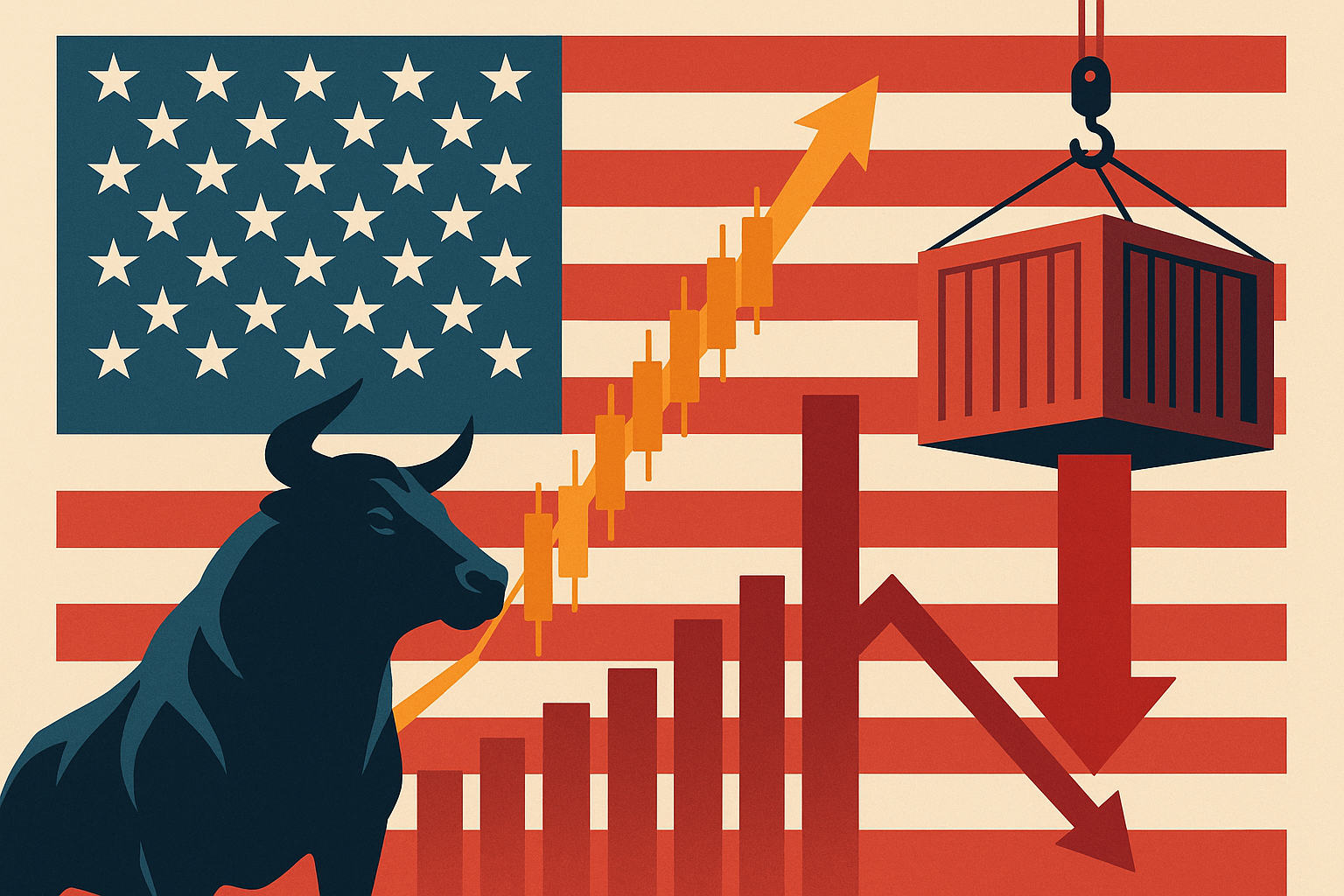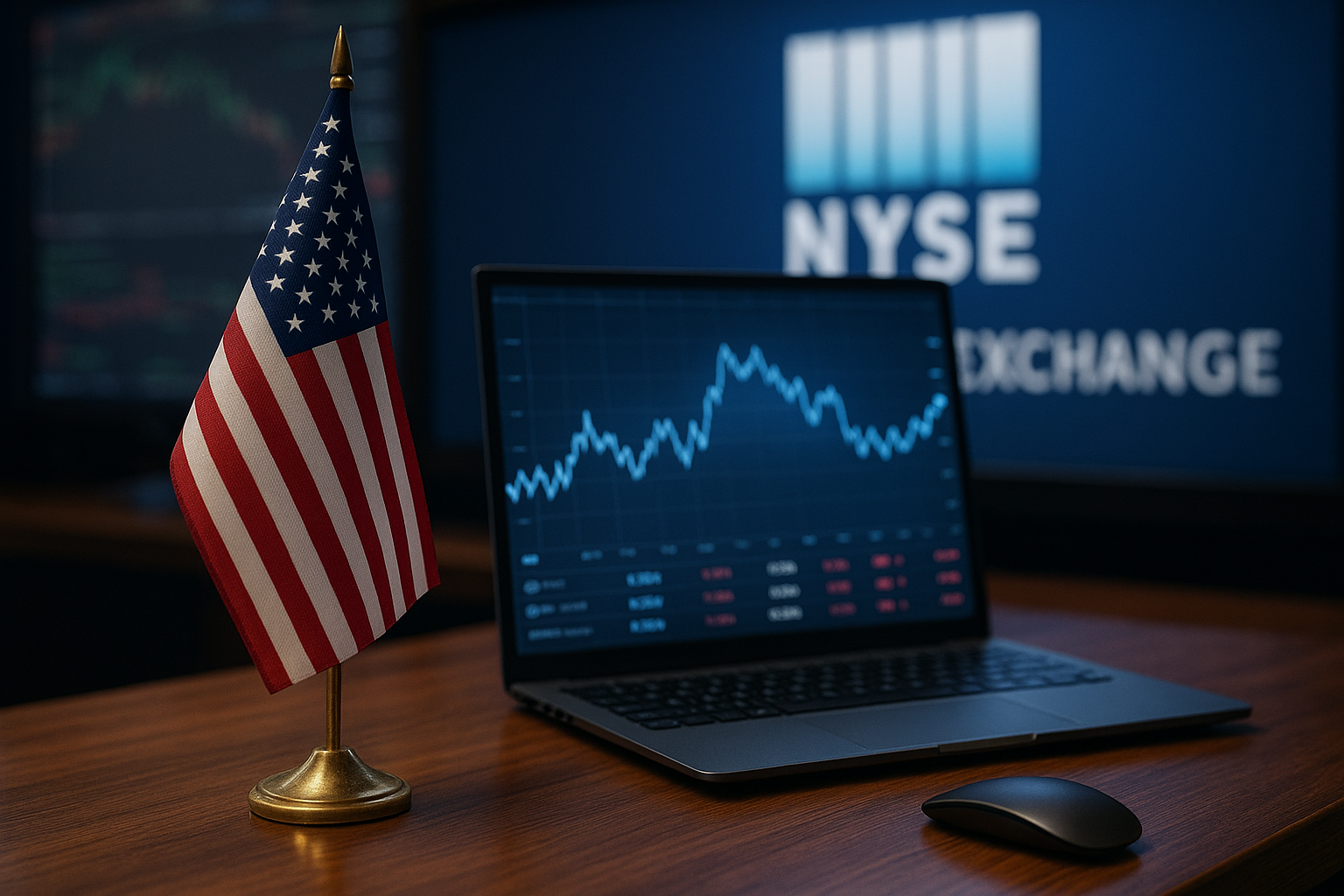Despite renewed threats of tariffs and geopolitical posturing, U.S. equity markets surged higher on July 14, with the Nasdaq Composite closing at a fresh all-time high. The S&P 500 followed closely, buoyed by optimism around corporate earnings, softening inflation, and continued investor appetite for quality growth stocks.
Even with the White House floating potential tariff expansions on Chinese imports—largely viewed as part of a broader negotiation strategy—markets maintained their upward trajectory. For many on Wall Street, this resilience signals that investors are willing to look past political noise, at least for now, and stay positioned in high-conviction, long-duration assets.
However, global manufacturing data and Treasury yield fluctuations remain key metrics to monitor, as they will likely shape the next leg of market direction heading into Q3 earnings season.
Market Optimism Holds Despite Trade Noise
July has been marked by sharp divergences between macro headlines and market performance. While trade rhetoric has intensified—with President Trump hinting at “decisive tariff action” if China fails to cooperate on IP reform—investors have largely shrugged off the risk, interpreting it as a high-stakes bluff more than a credible threat.
According to data from Bloomberg, the Nasdaq rose 1.2% last week, pushing YTD gains to over 21%, while the S&P 500 added 0.9%, closing just shy of its previous record. The Dow Jones Industrial Average, slightly lagging due to cyclical exposure, still ended in the green.
Markets appear to be pricing in:
- Strong corporate earnings led by Big Tech and financials.
- A softer rate outlook, as recent CPI/PPI data suggests inflation may be cooling.
- Continued consumer strength, with retail and housing data remaining robust.
While headline risk from tariffs is real, investors are betting on pragmatism winning over policy aggression—especially with the 2026 election cycle already influencing positioning.
Why This Matters for Investors
Equity markets near record highs often bring with them a paradox: euphoria mixed with fragility. Tariff escalations—should they materialize—could dent global trade flows, pressure input costs, and unsettle earnings forecasts, especially for multinational firms and industrials.
What’s Driving the Rally?
- Tech Leadership: Companies like Nvidia (NVDA), Microsoft (MSFT), and Meta (META) continue to outperform, riding the AI momentum wave and healthy Q2 guidance.
- Bond Yields Easing: The U.S. 10-year Treasury yield briefly dipped below 3.85% on July 12, signaling potential rate pauses that support equity valuations.
- Global PMI Signals: While U.S. manufacturing remains stable, European and Chinese PMIs showed contraction, pushing capital toward U.S. equities as a relative safety play.
However, volatility remains a risk. According to the CBOE Volatility Index (VIX), short-term volatility expectations rose slightly—signaling that some institutional players are quietly hedging for downside surprises.
Future Trends to Watch
- Q3 Earnings Season: Beginning next week, earnings from major banks and semiconductors will set the tone for forward guidance. Strong beats could justify current valuations; misses may trigger swift corrections.
- Trade Policy Clarity: Investors will seek clarity on whether tariff threats are real or rhetorical. Watch for policy drafts, ambassador statements, or WTO responses.
- Treasury Yield Inversion: The 2s/10s yield curve remains inverted—historically a precursor to economic slowdowns. Any steepening could signal shifting sentiment.
Key Investment Insight
Now is a moment to balance momentum with protection. While tech and AI continue to outperform, diversified exposure through broad index ETFs like SPY, QQQ, or VTI offers cushion against headline risks. Consider:
- Tilting portfolios toward quality growth names with strong cash flows and low debt.
- Increasing allocations to dividend-paying defensives in consumer staples and utilities.
- Using volatility ETFs or options strategies to hedge against potential pullbacks.
As always, discipline and macro awareness are key—especially when market sentiment becomes overly optimistic in the face of structural risks.
Stay with MoneyNews.Today to navigate every twist in the market narrative, from tariff tremors to earnings revelations. We bring daily, data-driven clarity to investors making decisions that matter.





